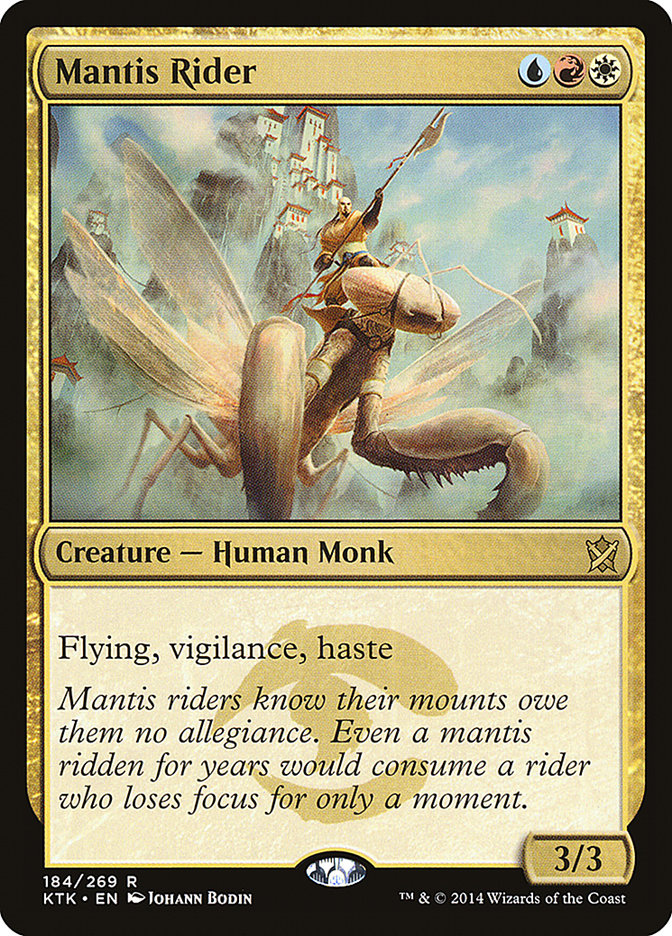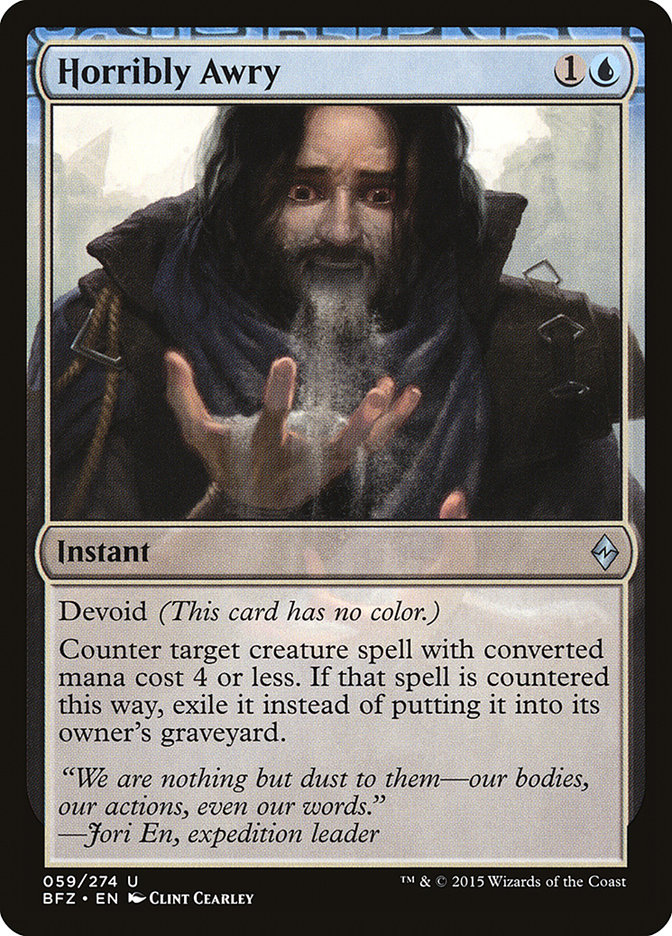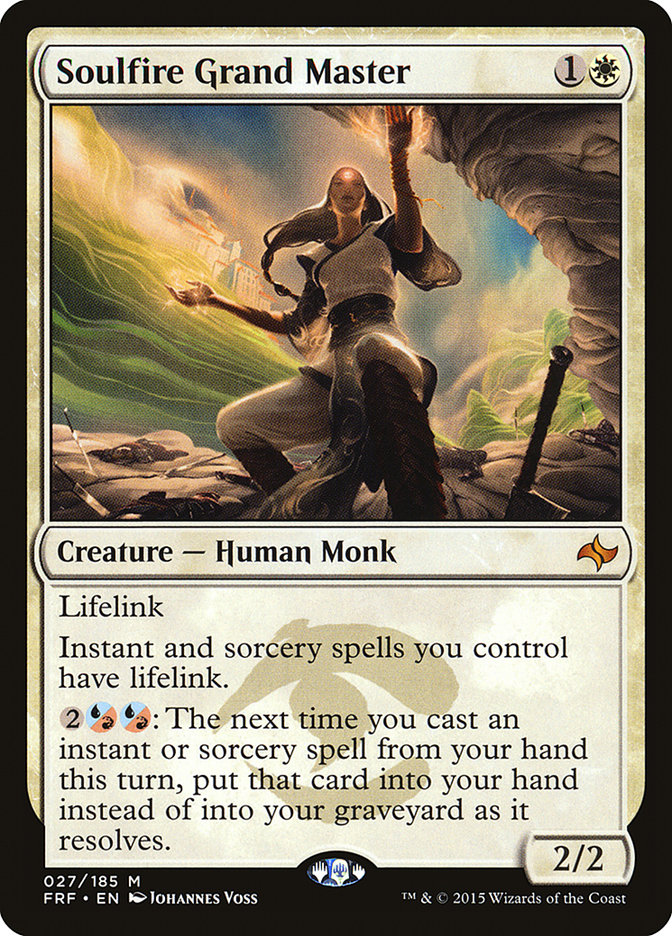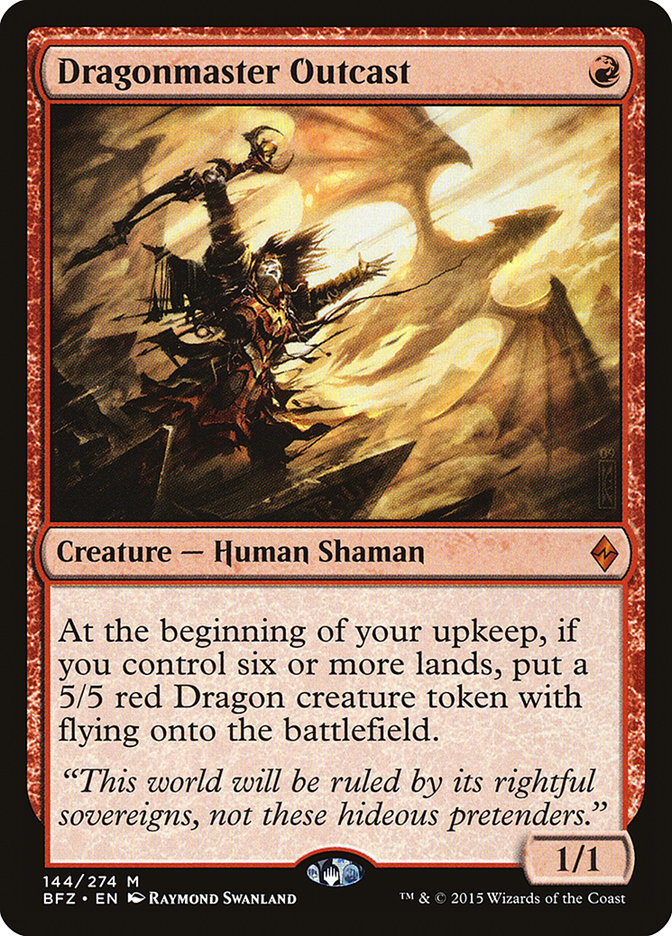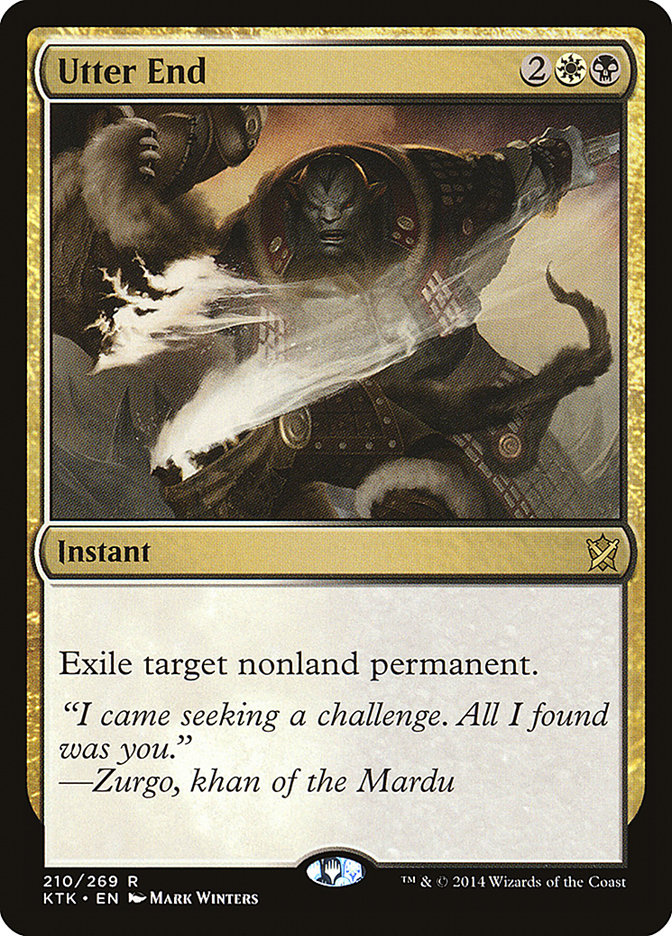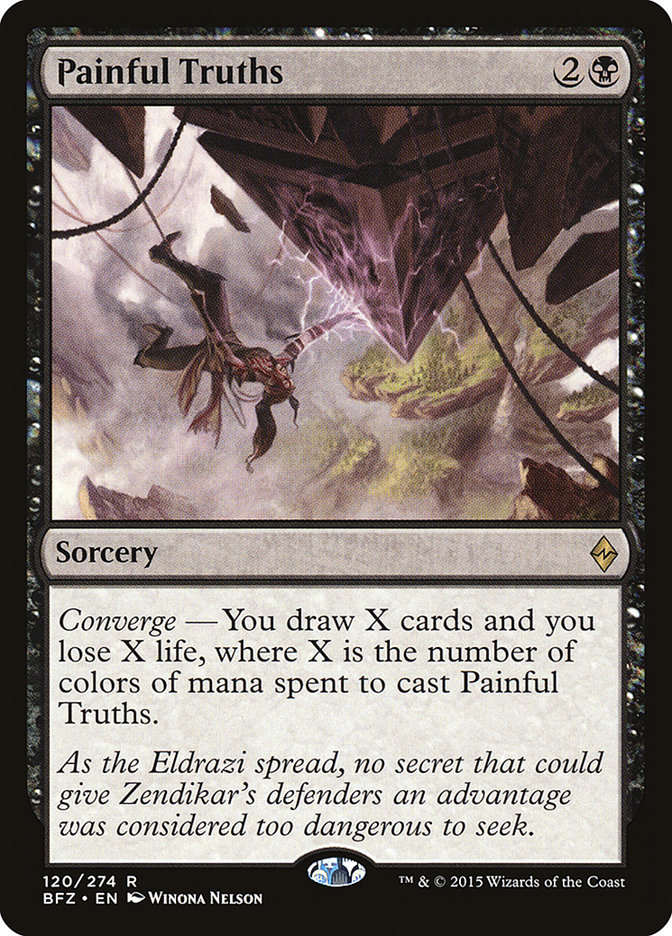Jeskai Black. It’s all I’ve been able to tinker with, think about, and play with in Standard over the last month. But why?
For years, I’ve had the mantra of “play cards in Standard that are banned in older formats.” This was true for Mental Misstep as well as a few other cards
over the years. Now, that same belief applies to Dig Through Time. With fluid mana, fetchlands, and a veritable cornucopia of powerful spells, Dig Through
Time feels pretty busted.
But in all honesty, Jeskai Black is probably not the best deck in Standard. I’ve won a few small tournaments and done reasonably well on Magic Online with
various iterations, but I still can’t put my finger on the right list. With so many colors and combinations of cards to choose from, nothing feels exactly
right or wrong. So how do we figure out the best version of Jeskai Black and what direction is the right direction to take?
As I’ve played and written about Jeskai Black for the last few weeks, I’ve learned a lot about the archetype, but I know very little on what the best
version is. For the mirror, it seems Tasigur is phenomenal, but I really like the four copies of Dig Through Time both in the mirror and every other deck
in the format, and you can’t support more than five or so delve spells without dedicated graveyard building. I think that four or five delve spells are
easy to support so long as you have enough cheap removal or other forms of interaction to grow the graveyard. It just seems that figuring out which of
these two spells is better will be the true test of how you build your version of the deck.
Much like the Grixis Control decks that were populating Legacy before the banning of Dig Through Time, cheap removal, counterspells, and discard effects
help fuel the graveyard quickly enough for Dig Through Time to take over the game. And with so many powerful options at your disposal in Legacy, Dig
Through Time was deemed too powerful for the format. In Standard, Jeskai Black feels pretty similar to that Grixis Control deck, which says a lot.
Creatures (8)
Planeswalkers (1)
Lands (19)
Spells (32)

The similarities are pretty clear, but there are some obvious growing pains between Standard and Legacy. We don’t have great card selection, and all of the
spells look a lot worse, but there is a broad spectrum of power between what’s good in Legacy and what’s great in Standard. Here, we see that many
fundamentals of the two decks are the same. Both try to kill opposing creatures and disrupt the opponent until it starts casting Dig Through Time. This is
the type of Magic I want to play, and is likely why I’ve been so attracted to Dig Through Time in Standard.
The more I play with Jeskai Black, the less I feel I understand the archetype. I’m winning a lot of games with Tasigur that I feel like I should be losing.
I’m losing a lot of games even when I resolve multiple Dig Through Times. Neither card can pull you from holes that have become too deep, but both are
great for different reasons when you’re even or ahead of your opponent. For a while now, I’ve contemplated a version that cut Mantis Rider in favor of
being a pure control deck, pushing the win conditions to the bare minimum and winning through grinding my opponents into dust. So far, the results are
reasonable, but something still feels off.
As I’ve discussed before, I think Mantis Rider is far and away the worst card in your deck after sideboard. So many decks have easy ways to kill it, and
you rarely win games due to incremental damage. Versions with Tasigur and Mantis Rider, alongside a few copies of Dispel, have a much different gameplan
than I want to play. Tempo-based versions of Jeskai Black are certainly good, which has been proven at the Pro Tour and the Grand Prix in Quebec City the
week after. Dispel complements this plan of cheap creatures that attack hard and fast. But in my experience, Dispel is pretty weak when you’re trying to
protect a scant few creatures from removal, and much stronger at stopping blowout spells like Ojutai’s Command or Dig Through Time. This is why I’ve been
having a tough time in the mirror, as Dispel is ridiculously good against all the versions I’m trying to play.
To alleviate this problem, it might mean playing a few copies of Dispel, even if I’m not using them to protect anything. I’m not a huge fan of this change,
as it feels lazy, but I can usually grind people out in the mirror as long as I can resolve my own copies of Dig Through Time. I might want a proactive way
to attack their resources, and Duress is at the top of my list to try out in the maindeck, but it is likely that I need to play something like Negate or
even Clash of Wills.
If we move away from Mantis Rider, we also take away some of the growing pains of the manabase. Swamp doesn’t work well with Mantis Rider, but it makes
Jace into Crackling Doom a much easier prospect. With how basic lands work with Mystic Monastery and how Battle lands work without access to two basics,
you have a lot of openers that are clunky (if you want to cast your spells). At times, you have to search for lands that let you cast early spells and hope
that you draw the right land(s) later in the game. It isn’t always easy, and sometimes you will brick and die because of it, but that doesn’t mean the
decision was incorrect. Jeskai Black is prone to fumbling every now and then, and especially so on the draw. This is why I’m an advocate of having a few
more cheap spells in the deck so that you can interact with your opponent on the first two turns while developing your mana. The coexistence of Crackling
Doom and Mantis Rider in the deck makes for some unruly starts, and cutting one from the deck alleviates this problem almost entirely. My vote is for
Crackling Doom.
Here is where I’m at right now with Jeskai Black.
Creatures (10)
Lands (26)
Spells (24)

The more I play this Standard format, the more I love it. Every deck seems to have a lot of play to it, regardless of the matchup. G/R Eldrazi Ramp is the
only polarizing archetype in the format, using two insanely powerful, high costed cards in Ugin, the Spirit Dragon and Ulamog, the Ceaseless Hunger. By
cutting Mantis Rider, I’m sure that I am making this matchup unfavorable, and it may require the use of Infinite Obliteration to counter this. After making
the Top 8 at Grand Prix Quebec City, there was a small spike in Infinite Obliteration this past weekend at Grand Prix Indianapolis, though I’m not sure if
this trend will continue. The problem with this card, and those of its kind, is that you don’t really solve the problem. Most decks like G/R Eldrazi Ramp
that could be vulnerable to such a spell have a solid backup plan. In this case, Ugin, the Spirit Dragon is just as powerful as Ulamog, if not more
devastating. The upside is that you can kill or counter Ugin without letting it get too much value, whereas Ulamog will always exile two permanents, even
if you’re able to deal with it. And when they start chaining Ulamog with Sanctum of Ugin, you’re in a lot of trouble if you can’t close the game
immediately.
But I want to build my deck to focus on the big three decks of the format. Atarka Red, G/W/x Aggro, and Jeskai Black make up the majority of decks you will
face in a given Standard tournament, and I want my build of Jeskai Black to put an emphasis on attacking those three archetypes. There are cards that
provide splash damage for fringe matchups like Esper Control, such as Disdainful Stroke, Negate, Duress, and Dispel, and should be included in your list in
some number, but the trick is finding the right combination.
It is possible that the Horribly Awry in the deck should become a second copy of Negate, but I find that having an extra way to stop Den Protector from
coming down on Turn 5 goes a long way in helping you win the game. It may be necessary to have an extra Negate over the Horribly Awry to combat Gideon
since it is the most-played planeswalker and one of the best threats against you. Without Mantis Rider, dealing with Gideon could be a bit harder than I
expect, but I’ve played this version against two different Gideon decks (G/W and Abzan) and was able to overcome them without too much trouble.
The craziest part about this deck, to me, is how powerful Soulfire Grand Master is, and how little people actually respect it. The life gained through
attacking and playing burn spells buys you enough time to find Dig Through Time and mostly ignore creatures while you develop your hand. I can’t even tell
you how many times Siege Rhino has resolved against me, and I just don’t care. If you have an early Soulfire Grand Master and a few burn spells, it will
take a long time for your life total to matter. On top of that, Soulfire Grand Master is absurd when you hit five or more mana. Being able to rebuy cheap
removal like Fiery Impulse or Crackling Doom locks a lot of people out of the game, not to mention the soft-lock of Kolaghan’s Command.
I will say that one card I’ve been missing from the deck is Jeskai Charm. I played two copies this past weekend in Indianapolis, and they were decent, but
they pair nicely with Mantis Rider in closing out games. I caught a few people with the Soulfire Grand Master plus Jeskai Charm your creature to the top of
your deck. Now that feels dirty, let me tell you.
After playing a ton of matches with Jeskai Black, and specifically the mirror, I can safely say that the most annoying card is Kolaghan’s Command.
Returning Jace to your hand after it dies while killing their Jace is incredibly powerful, and often results in you having the last Jace standing. In many
of the Jeskai Black mirrors, the first person to flip their Jace ends up winning the game, so long as you have the resources to protect it. It can be
difficult at times, but it also acts as a major distraction while you play your other spells. If you can keep the battlefield clean, or just draw a couple
of Ojutai’s Commands and Kolaghan’s Commands, it shouldn’t be too hard to keep your Jace nice and healthy.
The second copy of Dragonmaster Outcast is something I didn’t think I really wanted until I tried it out. I’m looking for Dragonmaster Outcast regularly
with a lategame Dig Through Time, and I don’t always find it. Having a second copy not only allows for you to find it quickly but also gives you the
ability to draw one early and not be devastated if it gets exiled by Utter End, Horribly Awry, or Complete Disregard. Cards like Silkwrap and Stasis Snare
aren’t too threatening since we can always unlock it later in the game when we have six mana thanks to Utter End.
I will say that this version of Jeskai Black does not win quickly. If you haven’t played a lot with the archetype and know all the ins-and-outs, it might
be tough to finish three games in the time allotted. Mantis Rider and Tasigur versions don’t have this problem because they put more pressure on the
opponent than I do. Their creatures, coupled with Dispel, can end games quickly, and to some people that makes them feel a lot more comfortable than
playing a deck without a lot of win conditions. The second Dragonmaster Outcast helps a lot in this regard, but that isn’t why I’ve decided to put it into
the deck. I just think that having two gives you a safety valve.
The second also gives you a lot more turns throughout a tournament where you cast Dragonmaster Outcast on turn 6 or 7 and are able to protect it or return
it to play once it has died. It can also distract the opponent in the earlygame, taking hits from their Silkwrap or Stasis Snare so that you can resolve
Jace and get it churning. While most people recognize that an early Dragonmaster Outcast is a slow burn and not exactly threatening, others are scared to
death at the potential of leaving it on the battlefield. I lie somewhere in the middle, because I know how powerful it can be, but killing it outside of
Utter End or Complete Disregard isn’t exactly dealing with it since all Jeskai Black decks have ways to get it back quite easily.
I’ve equated Jeskai Black to Jeskai Flash decks of old. But instead of having true “Flash” creatures, we have a lot of threatening, cheap creatures and
some powerful instants that can keep them coming back. How frustrating is it for the opponent to have to kill Dragonmaster Outcast three or four turns in a
row, lest they succumb to a flight of Dragons?
Both decks (Flash and Jeskai Black) played most of their spells on the opponent’s turn. This version of Jeskai Black stays true to that path of play, using
only a few mana on your own turn at most. Both decks have a lot of tricks, a lot of card advantage, and a few creatures that prove to be terribly annoying
the longer a game goes. The rest of the deck consists of removal, counters, and various other methods to keep the opponent guessing. If you have a lot of
different cards that require they play around them, your opponent will often make the incorrect choice. And sometimes, there isn’t a correct choice.
One thing I dislike about Jeskai Black is that few games are ever really “close.” If you stumble early on, you can fall behind enough that no amount of Dig
Through Times will bring you back in the game. You also have a lot of games where it is seemingly impossible to lose, but you can’t actually kill the
opponent for five or more turns. Games like this leave people feeling frustrated as you counter and kill everything they play, but it leaves me feeling
like a million bucks.
I love the salt.
I am unsure about a few cards currently in the list, including the Tasigur. I think a singleton gives you some play with this ability in the lategame, and
I am never unhappy to draw it. However, I don’t think a second one would be all that useful in this version, as it just leads to awkward draws featuring
the second Tasigur. Trust me, games can go long enough that you will draw the second Tasigur more than you think.
The sideboard feels almost perfect. I’ve been very happy with every card in the sideboard, and especially the singletons. I’m not completely sold that I
need an Erase and a Felidar Cub, since I do have access to two copies of Utter End, but G/W often has a sideboard plan that consists of beating you with
Mastery of the Unseen. You need Utter End to help clear the board of Gideon and other problems, which can tax them too much. In the mirror, I regularly
sideboard in the Felidar Cub and not the Erase, while in other matchups I like to bring in the Erase and not the Felidar Cub.
Painful Truths has been phenomenal for me. I tried out Ob Nixilis Reignited a while back, and it seemed fine, but the burst of cards from Painful Truths is
absurd. Your life total is rarely in jeopardy in matchups where you would want Painful Truths, and I don’t think this deck wants to tap out basically ever
on its own turn. I do think Ob Nixilis is a great card, and more decks with black mana should be playing it, but I think Painful Truths is better in Jeskai
Black. Cheaper spells means you can cast more spells per turn, which is generally how you win games of Magic.
Card-for-card, this version of Jeskai Black is the best version I have right now. I think many people will shy away from it because they like Mantis Rider
too much. I don’t blame you. I’ve won plenty of games on the back of double Mantis Rider, but I think we can do better. I’ll be continuing to test
variations of Jeskai Black in preparation for #SCGPHILLY this weekend and will likely post my list for the event on Friday night via Twitter and/or
Facebook. Follow me on those if you’d like an updated list before whatever Standard tournament you play in this weekend. I haven’t had an unintentional
draw in a very long time, but this deck is pushing the limits on that.
Wish me luck!


